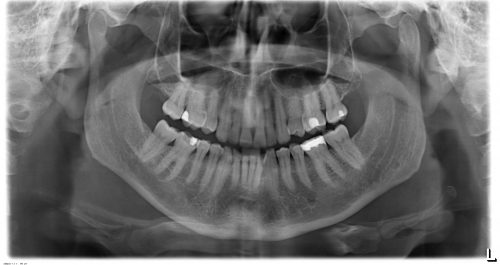
Why do I need an X-Ray?
There’s a lot going on in your mouth that is not visible to the naked eye, and dental X-rays allow your dentist to see what’s happening below the surface. By taking X-rays, your dentist is provided with a comprehensive assessment of the health of your mouth.
No visible signs of trouble
Tooth decay can be sneaky – it doesn’t tend to show physical signs of its presence early on. While your dentist is an expert at detecting problems in your mouth, they aren’t able to see through skin or bone. An X-ray is an important diagnostic tool that allows your dentist to confirm if you have tooth decay. It can also show if there is an infection around the roots of the tooth or bone loss. By catching any issues early your dentist can deal with them before they becomes a significant issue.
Safe for everyone
Regardless of whether you’re a child or an adult, you can have X-rays safely taken of the inside and outside of your mouth. The amount of radiation involved is extremely low.
If you are pregnant you may decide to avoid having an x-ray. This is completely understandable and is one of the reasons our dentists need to know if there is a chance you might be pregnant.
You might wondered why your dentist/nurse leaves the room when you have an X-ray. This is for 2 reasons, firstly, the controls are on the outside of the room, but it is also to limit their ongoing exposure to radiation due through repeated exposure.
Why X-rays are needed
At Canberra Dental Care we have 2 types of X-Rays that can be taken in the surgery. We can do a bite-wing, which focuses on one or two teeth and is performed in the chair. The second is an OPG (Orthopantomogram) X-Rays. This X-Ray shows your whole mouth. The type that your dentist will take depends on what they are looking for. The decision to take an X-ray, and the type of X-ray taken, will be influenced by such things as your past and present oral health, an examination of your mouth, your age, risk of disease and any early symptoms of oral disease.
What can dental X-rays detect?
Tooth decay – Areas of decay show up as dark spots in X-Ray images. X-Rays are especially helpful by revealing hard-to-see decay between teeth.
Problems with existing fillings, root canals, crowns or bridges.
Periodontal disease – Infection around the root of a tooth can occur below the gum line.
Cracks in teeth and fillings – Hairline cracks are often invisible to the naked eye, but become more obvious on X-Ray. This is often an early sign that a crown will be needed to save the tooth.
Cysts – Lumps, polyps, nodules and soft tissue growths below the gum line can be more readily seen with routine X-Rays.
Cancer – Bone and other types of cancers can be identified at an early stage, improving treatment options.
Infection – X-rays can reveal certain bacterial infections.
Bone loss – X-ray is an essential tool when diagnosing advanced cases of periodontal disease.
Impacted teeth – X-rays can show the exact position of teeth that have not erupted yet. X-rays reveal their location and direction. This is particularly useful with wisdom teeth.
Unerupted teeth – As children mature, X-rays confirm the position of permanent teeth. They also show any blockages to their proper eruption.
Clearly, X-rays give the dentist a lot of valuable information.
If you’re a new patient, taking a full series of X-rays provides an important starting point for your care. As you continue with regular checkups, fewer X-rays are usually needed. If you are transferring from another dental practice we are able, with your authorisation, to request a copy of your records. Often this will mean we don’t have to take further X-Rays.
Dental X-rays may seem like a lot of trouble or an extra expense, however, the benefit to your oral health cannot be overstated. By giving your dentist the full picture of your mouth they are able to provide the best care.
Book in for your next appointment on line or phone our friendly reception staff.
